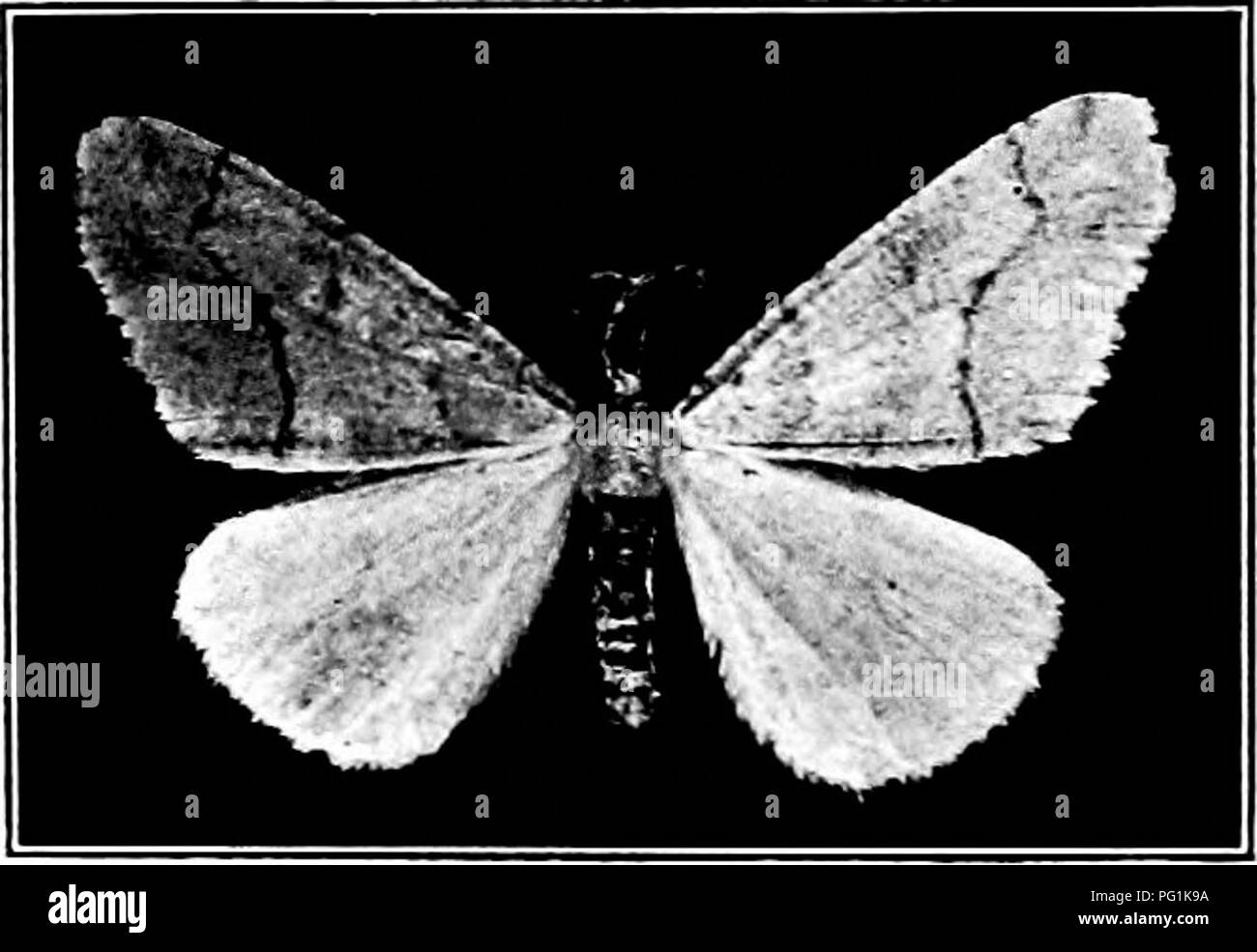. Injurious insects : how to recognize and control them . Insect pests; Insect pests. Fig. 413.—Larva of the Lime-tree Winter Moth. Original. end, another a third of the way toward the head end, and another two tliirds of the way toward the head. They have no feet along the middle part of the body, and move with a looping gait. The adult is a white moth, expanding about IJ inches. Eggs are laid in Jul}', in masses on the twigs, and hatch the foUowing summer. On orchard trees the best meas- ure of control is an application of arsenate of lead or Paris green. The Lime-tree Winter Moth {Erannis t

Image details
Contributor:
Central Historic Books / Alamy Stock PhotoImage ID:
PG1K9AFile size:
7.2 MB (210 KB Compressed download)Releases:
Model - no | Property - noDo I need a release?Dimensions:
1905 x 1312 px | 32.3 x 22.2 cm | 12.7 x 8.7 inches | 150dpiMore information:
This image is a public domain image, which means either that copyright has expired in the image or the copyright holder has waived their copyright. Alamy charges you a fee for access to the high resolution copy of the image.
This image could have imperfections as it’s either historical or reportage.
. Injurious insects : how to recognize and control them . Insect pests; Insect pests. Fig. 413.—Larva of the Lime-tree Winter Moth. Original. end, another a third of the way toward the head end, and another two tliirds of the way toward the head. They have no feet along the middle part of the body, and move with a looping gait. The adult is a white moth, expanding about IJ inches. Eggs are laid in Jul}', in masses on the twigs, and hatch the foUowing summer. On orchard trees the best meas- ure of control is an application of arsenate of lead or Paris green. The Lime-tree Winter Moth {Erannis tiliaria Harr.) The larva of this species some- times strips the foliage of apple trees. It is a spanworm or " measuring worm, " IJ inches long when full grown, the body j-ellowish above with several fine black lines down its back, the under side lighter. The adult moths usually emerge in the fall, but occasionally not until spring. The male is winged, but the female is spiderlike and wingless. The caterpillars are at work in the early weeks of the growing season. Pupation takes place in the groimd. In its appearance and habits this species resembles the canker-worms. The remedies recommended for the latter will apply to tliis pest.. Fio. 414.- -The Lime-tree Winter Moth. Original. The Chain Spotted Geometer {Cingilia catenaria Dru.) Characteristic, slender measuring worms, li inches long when fuU grown, feed on the foliage of various bush fruits. The caterpillar. Please note that these images are extracted from scanned page images that may have been digitally enhanced for readability - coloration and appearance of these illustrations may not perfectly resemble the original work.. O'Kane, Walter Collins, b. 1877. New York : The Macmillan Company